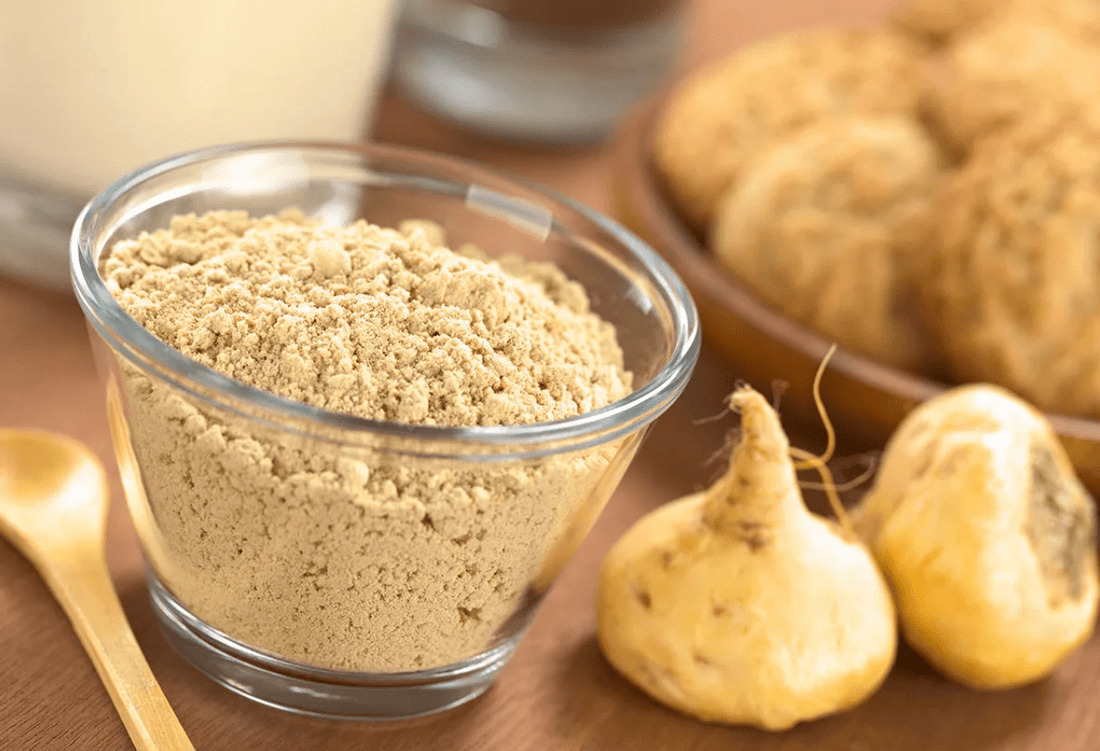If you believe what doesn’t kill us makes us stronger, then I invite you to imagine the same is true for the food we eat. The more difficult the conditions under which a plant grows, the more robust and vital it becomes, and the more enriched its nutrients. Consider maca root powder, a powerful adaptogenic root Peruvian plant of the Brassicaceae family cultivated for more than 2000 years, which grows exclusively in the central Andes mountains and endures extreme conditions between 4000 and 4500 m altitude.
Lepidium meyenii or Peruvian ginseng, aka maca, is a cruciferous vegetable, meaning that it is related to broccoli, cabbage, and kale. It also has a tuberous root, the oversized organ below the ground that stores the nutrients of the maca plant. Given the extreme conditions maca endures, it makes perfect sense that supplementing with maca is known to support the human body amidst changing physical and mental stresses, balance hormone levels, ease anxiety, sustain energy, increase libido and enhance fertility.
High in protein, fiber, vitamin C, B vitamins, calcium, iron, potassium, copper, manganese and fatty acids, maca has been used by South Americans for thousands of years. Traditionally used in Peru to improve children’s performance in school, maca may also improve brain function.
Containing phytonutrients known for their antioxidant and anti-inflammatory properties, maca can also balance immunity, repair DNA damage from exposure to toxins, and detoxify carcinogens. As if that weren’t enough, studies also show maca can increase stamina and metabolism, as well build muscles and strength which makes it incredibly useful during hard training and other tests of physical endurance. Best absorbed with food, Maca is recommended to have with breakfast as the ideal set up for a more balanced day with less stress.
There's no shortage of easy ways to add maca to your diet beyond our superfood pancakes, thanks to its powder form and mild, pleasant flavor. On colder days, we recommend adding maca to warm nut milk and a touch of natural sweetener. You can also add it to your morning coffee, add it to smoothies, coconut yogurt, energy balls, cookie dough—the options are virtually endless. One to two tablespoons is a typical serving size, but it may be best to start with just ¼ teaspoon to ½ teaspoon every other day to acclimate your digestive system. Because it can be stimulating for some people, you may want to avoid maca before bed.
Combining maca with other adaptogens and superfoods can also have an effect called “potentiation.” This basically means that combining one substance with another enhances the benefits beyond what occurs when taken alone. One serving of PranaCakes™ contains 70% of the recommended daily value of this epic superfood adaptogen, which is combined with a host of powerhouse ingredients including cacao, spirulina, ashwagandha, cordyceps, sacha inchi, buckwheat, arrowroot, ceylon cinnamon, coconut sugar and coconut milk powder. This sacred synergy is designed to revitalize your body, balance your immunity and enhance your energy. The perfect combination to endure the many ways our modern world challenges us each and every day.

